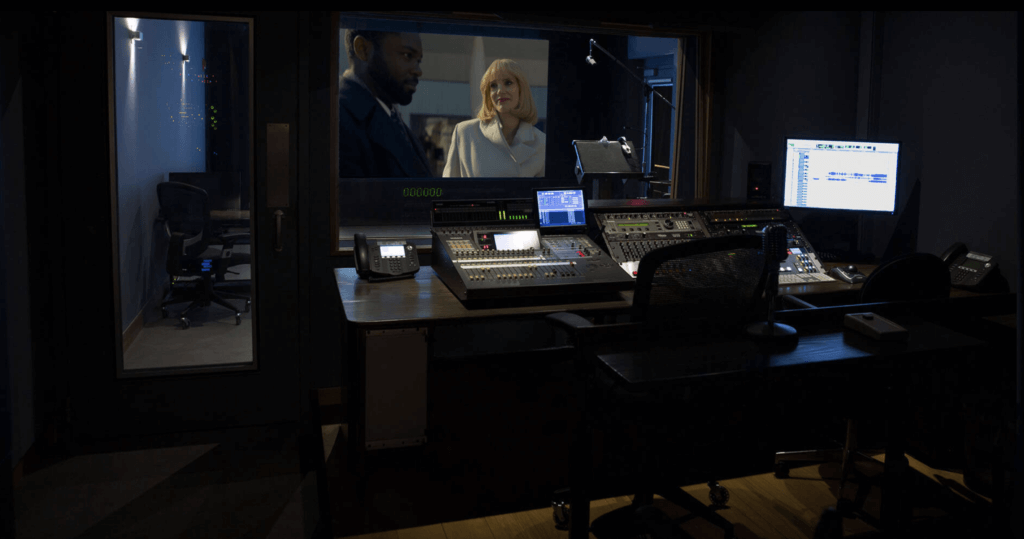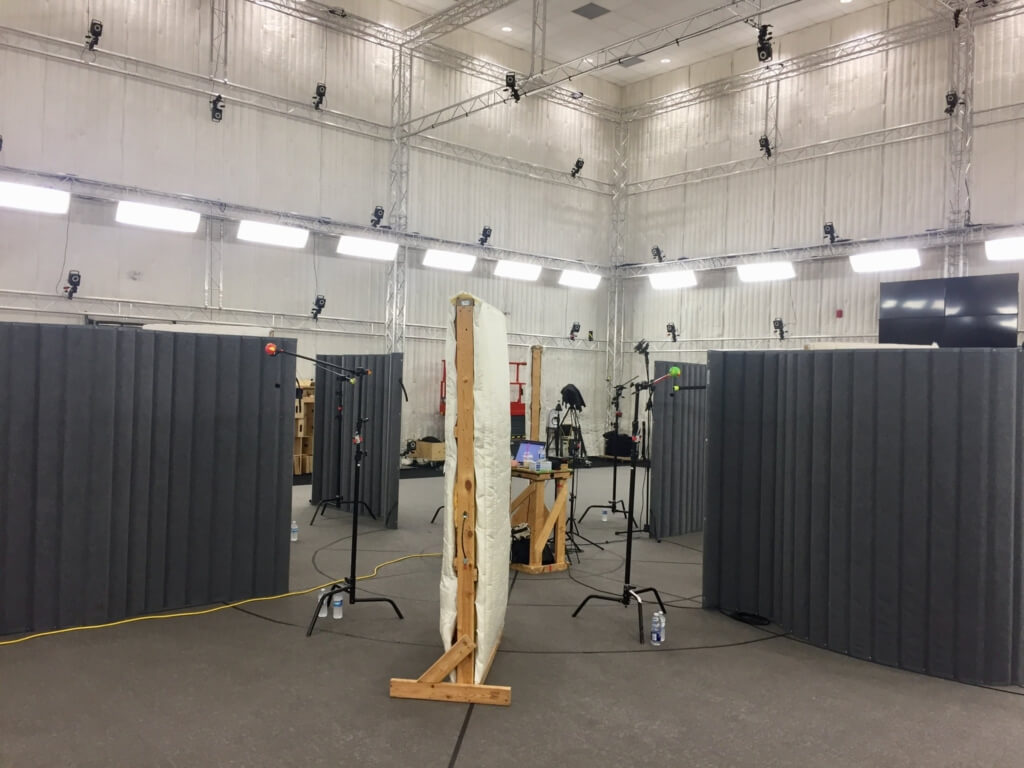We dig deep into the rarely talked about art of running a successful Loop Group session. Oscar winning Supervising Sound Editor Nina Hartstone, Dialog Supervisor Brian Bowles, ADR/Loop Group Recording Engineer Bobby Johanson and Game Dialog Designer Tim Atkins take us through everything you need to know to run your own Loop Group session.



LINKS:
__________________________
The following is a lightly edited and repaired, A.I. generated transcript of Tonebenders episode 197 – Loop Group Roundtable Talk. Please excuse any typos or translation mistakes made by the algorithm. It is not meant to be read like a polished blog post.
Tim Muirhead/Host
Bobby Johanson – ADR/Loop Group Recording Engineer
Tim Atkins – Game Dialog Designer
Nina Hartstone – Supervising Sound Editor
Brian Bowles – Dialog Supervisor
_____________________
Timothy Muirhead 0:00
Hey everyone! Before we get into the body of this episode, I just wanted to give it a quick bit of context. This interview was done in early Spring 2022, while the world was just exiting the Omicron wave of COVID. So dealing with COVID protocols was very much at the top of the minds of my guests at this point. So with that said, let’s get to it.
Narrator 0:27
You’re listening to Tonebenders, the sound designers’ podcast. Let’s do this.
Timothy Muirhead 0:40
Hello, and welcome to Tonebenders. My name is Tim Muirhead and I will be your host for today. Loop group is an important part of bringing a film, game or series to life. Loop group can take a scene that feels flat and lifeless and elevate it so it feels like it’s bursting with energy. If done right, loop group can sell emotions, focus attention and add tension. But it’s the doing it right part that can be tricky. That is why we’ve assembled a dream team of folks that can talk us through the best practices, do’s and don’ts and pass on their hard fought lessons that they’ve learned from their countless loop group sessions. Joining us today from London, we have Nina Hartstone, Nina won an Oscar for her sound work on Bohemian Rhapsody. She was last on Tonebenders in our Episode 94, talking about her work on that film. She told us a story about how she organized a special outdoor loop group session so that the crowds would sound more realistic. And it really showed her passion for loop group. So we had to get her back on for this talk. Welcome back, Nina. It’s great to have you on again.
Nina Hartstone 1:37
Thanks. Thanks very much for having me on again.
Timothy Muirhead 1:39
We also have Brian Bowles with us. Brian is a busy dialogue supervisor based in New York City. His past projects include Uncut Gems and The Ballad of Buster Scruggs, as well as many, many more. Welcome, Brian, it’s great to talk to you.
Brian Bowles 1:50
Yeah, thanks for having me. I’m glad to be here.
Timothy Muirhead 1:52
To give us a different perspective, we have a goddamn legend joining us today. When you ask around the East Coast about who is the best to record ADR and loop group with, the response will almost always be Bobby Johansson. If you have a favorite film since the mid 90s, chances are good Bobby recorded some of the voices for it. Based out of Harbor Post in New York, welcome to Tonebenders, Bobby.
Bobby Johansson 2:14
Thank you for having me. And for that, great, and I find not true, but, introduction. Thank you.
Timothy Muirhead 2:20
Finally, to give us a game audio perspective, we have Tim Adkins, Tim has worked as a voice designer on the Far Cry series, the Division and lots more. I saw Tim do a talk in Montreal a few years ago and was blown away. So I’m glad to have him with us today, so we can pick his brain. Welcome, Tim,
Tim Adkins 2:35
Thank you very much for having me. It’s an honor to be here.
Timothy Muirhead 2:37
Okay, the idea for this talk is to dig deep on the ins and outs of having a successful loop group session. Although all my guests have extensive experience with loop group, let’s imagine someone that is jumping up a level and working on their first feature. What advice are you going to give them to start to prepare for their first loop group session? So let’s start with the prep work. Nina, how do you go about breaking down exactly what the script needs, and then turn that information into planning a loop group session?
Nina Hartstone 3:02
I mean, loop group is such a fun aspect, actually, of our job. We look at the pictures and we start thinking about how we’re going to record the crowds. I mean, in an ideal world, we’re thinking about this even earlier, to be honest. If we are engaged in pre-production, and we read the script, we start looking and go: “Okay, hang on a minute, you’re gonna get loads of extras on set here; they’re all going to need voices in post-production.” So we will look through and we’ll start trying to think about the best, most authentic way we can go about giving voices to all those extras who appeared during the shoot. And we’ll go through and we’ll start breaking it down into: How many voices do we need to get in? What kind of split do we have? What gender split? What nationality split? Are there any foreign languages that we need to be thinking about? And that’s sort of… that’s populating the extras, who you see on the screen. There’s other areas where the loop group might come in useful as well. There might be a scene that’s maybe got a TV show running in the background or a radio. We’ll also be using our loop group to create the content for that, more often than not. They might be pretending to be a sports presenter. So you’ve got a sports show playing off the TV or doing a radio show for us. So, voice actors do provide quite an important role in our soundtrack, particularly in a film that’s got an awful lot of extras in it.
Timothy Muirhead 4:15
Tim, is it similar for game audio?
Tim Adkins 4:17
Uh, actually it kind of is similar. Yeah. Triple A, so-called Triple A gaming production cycles tend to be pretty long. But it’s something we need to think about early in pre-production as well. The same sort of considerations that Nina mentioned, in terms of gender and that kind of thing. And also, how big of a role do crowds play in this particular game; it is a pillar of game designed to have large crowds. Because it’s quite a tricky thing to actually pull off in games to have a large amount of NPCs or non-playable characters on the screen at one time. It’s very memory and processor intensive. So, in order for that to happen, it’s a very deliberate decision made early on. From there, we need to decide when in the production cycle were going to actually tackle the walla recording or the loop group recordings. It tends to be towards the the end, because games are constantly in flux and changing all the time. So the later we can push it, I guess it’s exactly the same in in post, the less likely, you’re going to have to get that loop back in and do more recordings for something that’s completely changed. From there, it’s kind of looking through talking with the narrative team and the AI teams, of course, and collaborating with those departments pretty closely. And also looking at the scripts as they start to form. Traditionally, I’ll start looking at the cinematic, linear cutscene scripts. That’s usually where a lot of the loop group action is happening traditionally, in a lot of the games I’ve worked on. And also from there I’ll get notes from sound designers who think their missions that they’re designing sounds for will need some crowds. I’ll look through all the mission scripts as well, and take notes. But then I just keep asking the narrative team: “Do you need crowd for this? Do you need crowd for this?” Because it’s not something they’re necessarily thinking about at the forefront their mind, whether they need those kinds of sounds. But obviously, we in the voice team are… so, got to keep keep at them, really.
Click on Page 2 below, to read the rest of the transcription of this episode.
Pages: 1 2


Just started listening to your guys podcast (currently on episode 38). Can’t believe you guys have been at it for 10 years, can’t wait to hear the more inspiring stories! Many thanks from a hopefully future sound designer ❤️
Thanks so much for listening and I am really glad you found Tonebenders.Stay in touch!